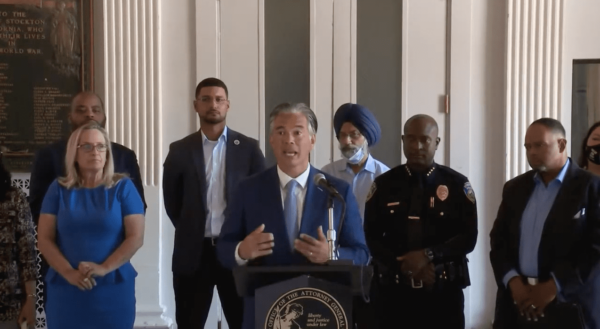While Los Angeles County has made “historic investments” in resources to benefit immigrants, additional efforts are needed to assist immigrants in areas such as college readiness, mental health, affordable housing and help for newly arriving refugees, according to a report released Tuesday.
The fourth annual State of Immigrants in Los Angeles report — prepared by the USC Equity Research Institute, California Community Foundation Council on Immigrant Inclusion– was released during an Immigration Summit at the California Endowment.
“If we’re helping immigrants access education, employment, better wages, we as an economy will prosper from that, that has a huge ripple effect — a multiplier effect on the economy if we’re able to help improve the economic viability of these populations that we’re trying to target whether it’s immigrants, African Americans, Latinos,” Abigail Marquez, general manager of the city of Los Angeles Community Investment for Families Department, said in a statement. “If we put more resources there it will yield huge economic gains for us as a region.”
According to researchers, immigrants represented 34% of Los Angeles County and paid $10.7 billion in state and local taxes, along with $20.8 billion in federal taxes while wielding $83.8 billion in spending power in 2019.
The report found that while outreach and efforts to expand inclusion are making a difference, more efforts are needed at the county level to include “diverse perspectives in decision-making processes, particularly for indigenous groups and newer refugee and asylum seekers.”
Researchers also noted that 28% of immigrant households are “linguistically isolated,” a figure that increases to 37% when it comes to undocumented immigrant households.
“The county still grapples with ongoing challenges, as Washington remains stagnant on meaningful immigration reform that could resolve the status uncertainty and precarity that many immigrant Angelenos and their loved ones face,” according to the report. “In this moment, local action to remove barriers and promote prosperity is more critical than ever. Los Angeles — always at the cutting edge of inclusion — can show the nation what a society could look like and how everyone benefits when we meet the needs of immigrants.”
The report makes 10 recommendations for meeting the needs of the immigrant communities:
- produce more expansive and accurate data to understand challenges and track investments in issue areas like digital equity, housing resources, and healthcare;
- consider the “full range of issues” impacting immigrant lives, including physical and mental well-being;
- address language access and cultural competency in all interactions such as housing, healthcare, and more;
- promote entrepreneurship and workplace standards, eliminating barriers to achievement and family prosperity;
- increase long-term investments in community-led efforts with reduced bureaucratic hurdles, especially for coalition-based efforts, to ensure immigrant inclusion;
- provide funds for immigrant-serving organizations to increase wages and reduce staff burnout;
- increase investments in diverse immigrant communities that have received less attention, such as immigrants who are LGBTQ+, disabled, Black and Indigenous;
- anticipate future trends such as the potential for increasing numbers of refugees and immigrants, and aging among immigrants;
- stress the need to “go beyond integration to inclusion,” ensuring programs are equitable for both immigrants and communities of color; and
- continue to create policies and investments that help Los Angeles lead the country on immigrant inclusion.
“L.A. County is positioned to provide equitable access to resources, create the conditions for immigrants to thrive, and foster a welcoming place for its immigrant communities. Yet, the data highlights where we are falling short,” Manuel Pastor, director of the USC Equity Research Institute, said in a statement. “While there is work to be done, L.A. County continues to innovate policy and grow as a dominant force in the movement toward racial justice and equity for all.”







